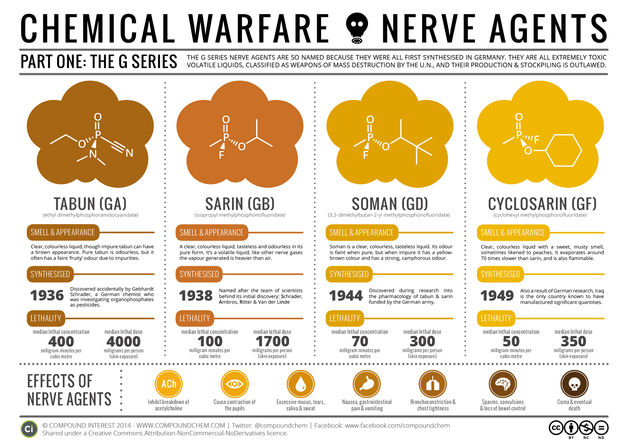© Compound InterestChemical Warfare & Nerve Agents
Today’s graphic looks again at the darker side of chemistry, after the previous post on the various chemical agents used in World War 1. The present day spectre of chemical warfare is largely concerned with nerve agents, which come in two main groups; today’s post examines the G series of nerve gases, including sarin, which has made the news in the past year following its use on civilians in Syria.
The G series of nerve gases is so named due to their origin, with all of them originally discovered in Germany in the 1930s and 40s. Their discovery was actually a complete accident; Gebhardt Schraeder, a German researcher, was investigating the potential use of organophosphates as pesticides in 1936 when he synthesised the first of the G series nerve gases, tabun. He also played a part in the discovery of sarin in 1938. The other member of the G series, soman and cyclosarin, were discovered during the course of research funded by the German army into the pharmacological action of tabun and sarin.







